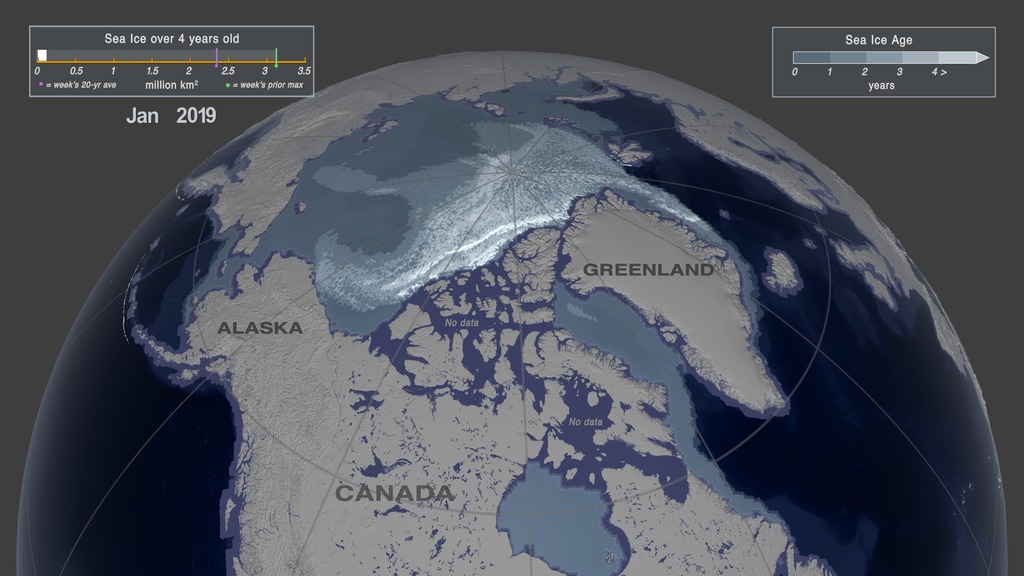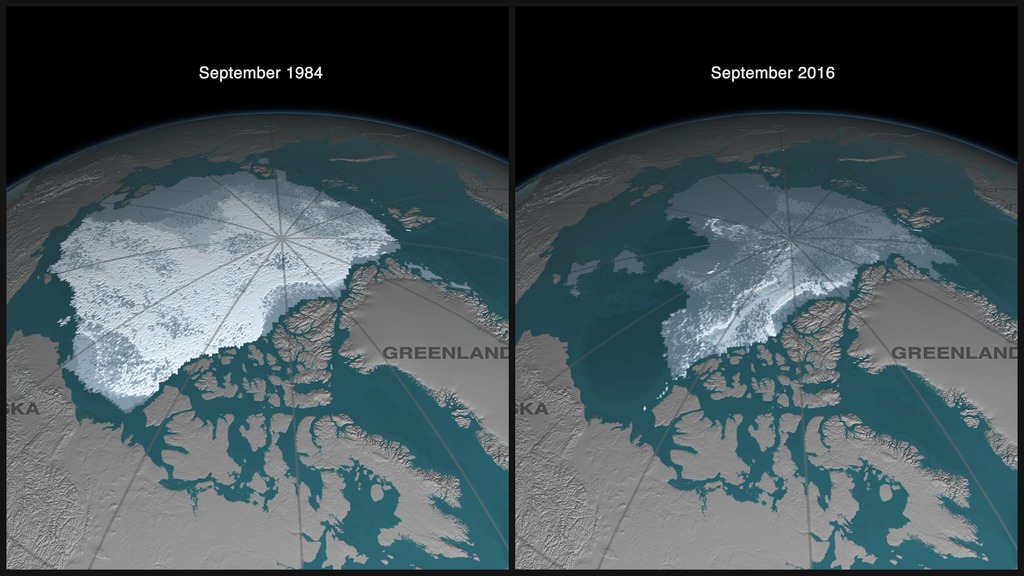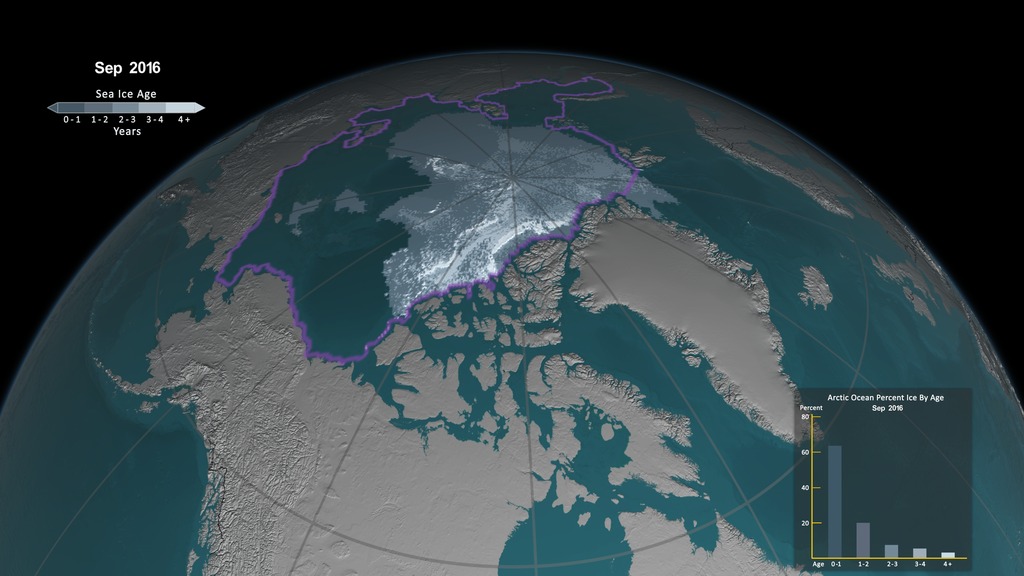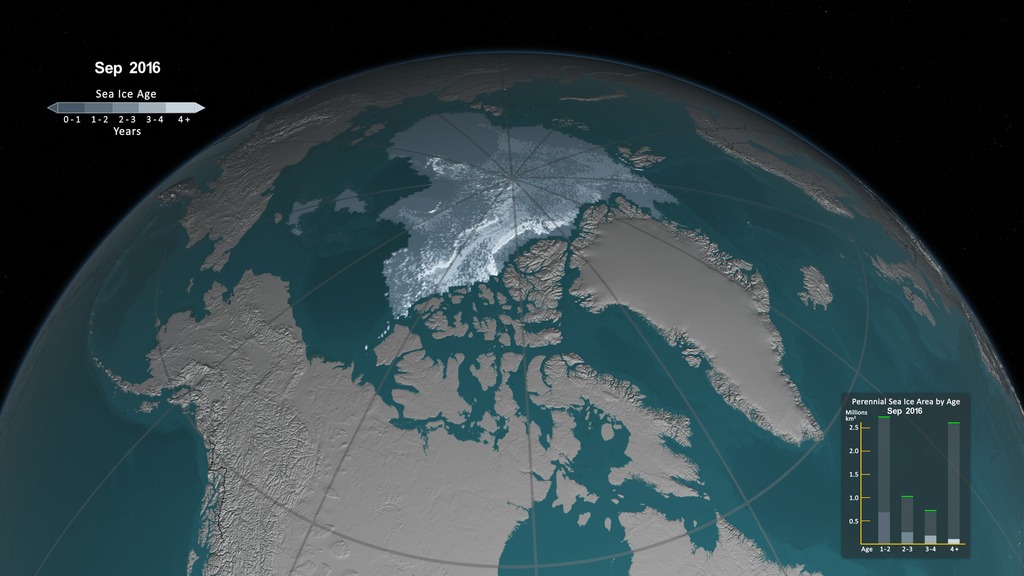Yearly Arctic Sea Ice Age with Graph of Ice Age by Area: 1984 - 2016
One significant change in the Arctic region in recent years has been the rapid decline in perennial sea ice. Perennial sea ice, also known as multi-year ice, is the portion of the sea ice that survives the summer melt season. Perennial ice may have a life-span of nine years or more and represents the thickest component of the sea ice; perennial ice can grow up to four meters thick. By contrast, first year ice that grows during a single winter is generally at most two meters thick.
This animation shows the Arctic sea ice age for the week of the minimum ice extent for each year, depicting the age in different colors. Younger sea ice, or first-year ice, is shown in a dark shade of blue while the ice that is four years old or older is shown as white. A color scale identifies the age of the intermediary years.
Correction: The original release on 10/28/2016 incorrectly labeled the oldest category on the graph as "5+". This was corrected to read "4+" on 10/30/2016.
This animation shows the annual change in sea ice age at each year's minimum extent. Younger sea ice, or first-year ice, is shown in a dark shade of blue while the ice that is four years old or older is shown as white. A bar graph displayed in the lower right corner quantifies the area covered by the ice in each age category on the day of the annual minimum. In addition, memory bars shown in green portray the maximum annual value for each age range seen since January 1, 1984 on the day of the annual minimum.
This video is also available on our YouTube channel.

A still image of the annual minimum sea ice age in 2016 with the graph overlay. The green memory bars portray the maximum annual value for each age range seen since January 1, 1984 on the day of the annual minimum.

A still image of the annual minimum sea ice age in 1984 with the graph overlay.
The annual minimum sea ice age without the graph overlay.

The overlay with the graph of the annual sea ice minimum showing the perennial sea ice by age in square kilometers with transparency.
Credits
Please give credit for this item to:
NASA's Scientific Visualization Studio
Special thanks to:
Mark Tschudi, Univ. of Colorado, for providing the data. For more information, click here.
-
Visualizer
- Cindy Starr (Global Science and Technology, Inc.)
-
Scientists
- Walt Meier (NASA/GSFC)
- Nathan T. Kurtz (NASA/GSFC)
-
Producer
- Jefferson Beck (USRA)
-
Project support
- Joycelyn Thomson Jones (NASA/GSFC)
- Leann Johnson (Global Science and Technology, Inc.)
-
Technical support
- Laurence Schuler (ADNET Systems, Inc.)
- Ian Jones (ADNET Systems, Inc.)
Release date
This page was originally published on Friday, October 28, 2016.
This page was last updated on Sunday, February 2, 2025 at 12:08 AM EST.
Datasets used
-
Weekly Sea Ice Age
ID: 940SSMI-SSMIS passive microwave data, augmented with buoys, AVHRR, AMSR-E, and winds
See all pages that use this dataset
Note: While we identify the data sets used on this page, we do not store any further details, nor the data sets themselves on our site.




